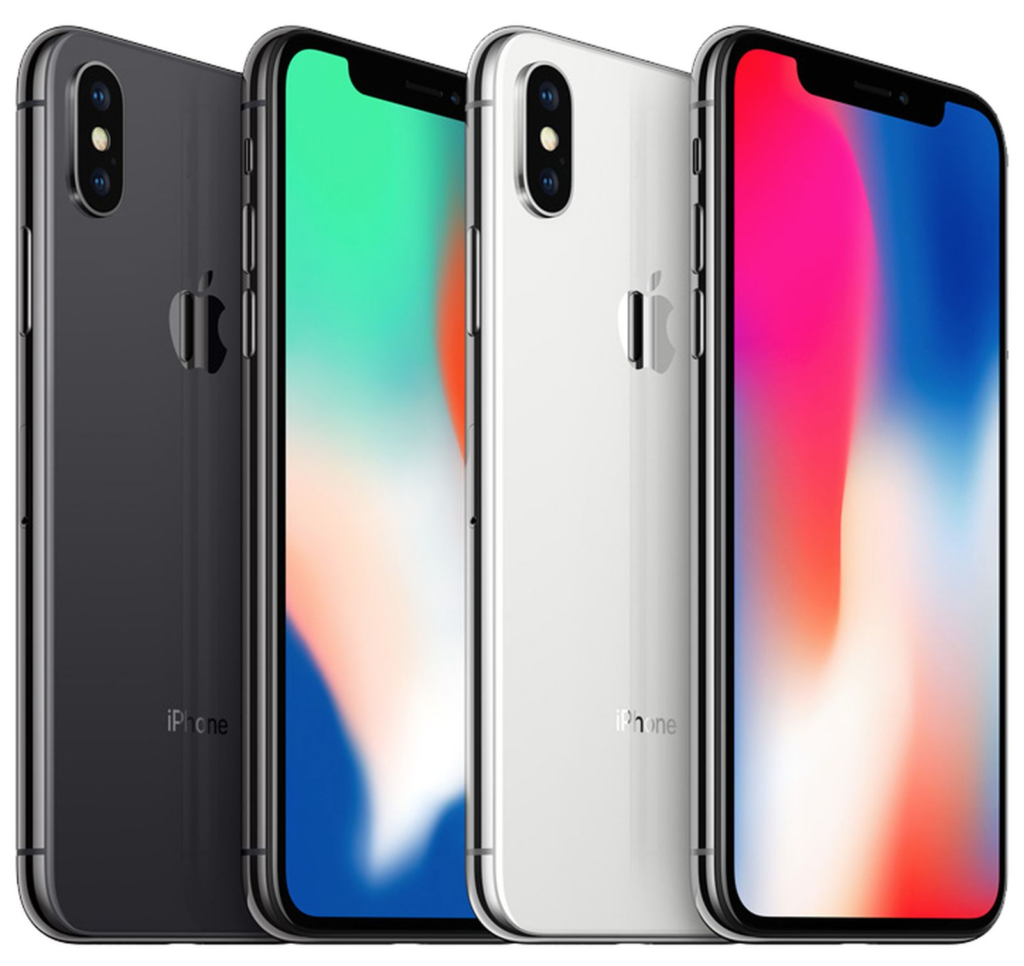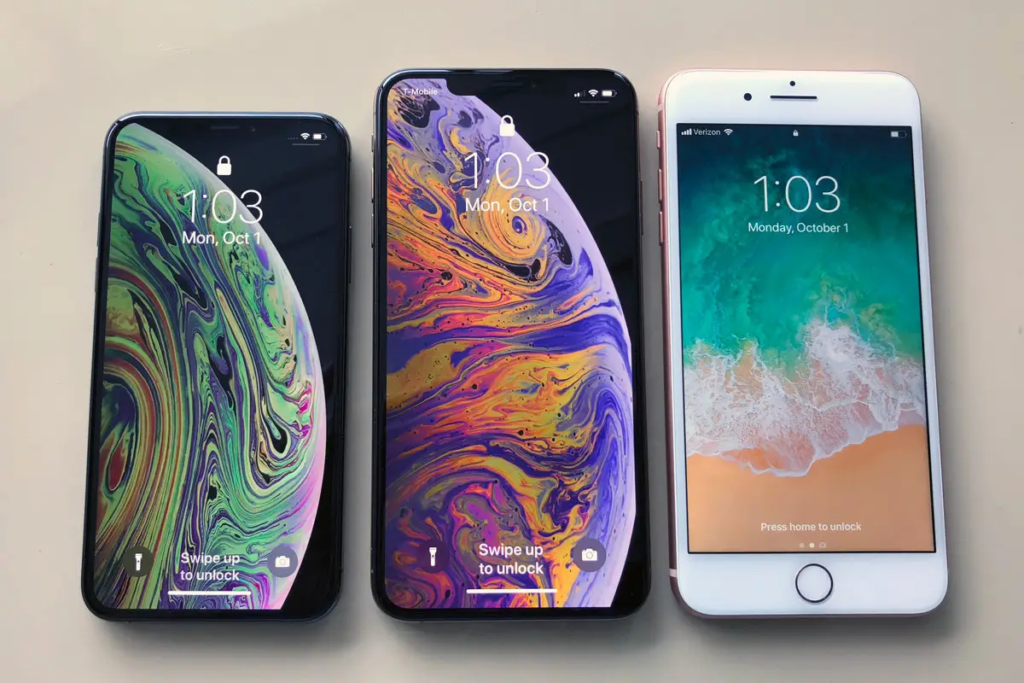Apple’s Iconic Mobile Phones In the realm of mobile technology, Apple has carved out a niche for itself as a trailblazer, setting new standards with each iteration of its iconic iPhone. From its humble beginnings in 2007 to the latest cutting-edge models, Apple’s mobile phones have become synonymous with innovation, design excellence, and an unparalleled user experience. Join us on a journey through the evolution of Apple’s mobile phones, exploring their history, features, and prices across different models.
iPhone (2007):
History: But the original iPhone, unveiled by Steve Jobs in January 2007, revolution the smartphone industry with its groundbreaking design and intuitive touch interface. It combined a mobile phone, an iPod, and an internet communicator into a single device, setting the stage for a new era of mobile computing.
Features: The iPhone featured a 3.5-inch multi-touch display, a 2-megapixel camera, and a sleek, minimalist design. It ran on iOS, Apple’s proprietary operating system, and introduced innovative features such as the App Store, which allowed users to download third-party apps directly to their device.

Price: But the original iPhone was price at $499 for the 4GB model and $599 for the 8GB model with a two-year contract.
iPhone 3G (2008):
History: Building on the success of the original iPhone, Apple released the iPhone 3G in 2008, introducing support for 3G cellular networks and GPS navigation. It further solidified Apple’s position as a leader in the smartphone market.
Features: But the iPhone 3G featured a sleeker design with a plastic rear casing and improved hardware specifications, including a faster processor and better battery life. It also introduced the App Store, allowing users to access a wide range of third-party apps and games.

Price: But the iPhone 3G was price at $199 for the 8GB model and $299 for the 16GB model with a two-year contract.
iPhone 4 (2010):
History: The iPhone 4, released in 2010, marked a significant leap forward in terms of design and technology. It introduced a sleek, glass-and-metal design, a high-resolution Retina display, and a front-facing camera for video calls.
Features: But the iPhone 4 featured a 3.5-inch Retina display, a 5-megapixel rear camera with LED flash, and a redesigned antenna system for improved signal strength. It also introduced FaceTime, Apple’s proprietary video calling service, and iOS 4, which introduced features such as multitasking and folders.

Price: But the iPhone 4 was price at $199 for the 16GB model and $299 for the 32GB model with a two-year contract.
Apple’s Iconic Mobile Phones:
iPhone 5 (2012):
History: The iPhone 5, released in 2012, represented another leap forward in terms of design and performance. It featured a larger 4-inch Retina display, a faster A6 processor, and support for 4G LTE networks.
Features: But the iPhone 5 featured a taller, slimmer design with an aluminium rear casing and diamond-cut edges. It also introduced new features such as Siri, Apple’s virtual assistant, and Passbook, a digital wallet for storing boarding passes, tickets, and coupons.

Price: But the iPhone 5 was price at $199 for the 16GB model, $299 for the 32GB model, and $399 for the 64GB model with a two-year contract.
iPhone 6 and iPhone 6 Plus (2014):
History: In 2014, Apple introduced the iPhone 6 and iPhone 6 Plus, featuring larger displays, improved cameras, and a thinner, more rounded design. The iPhone 6 Plus marked Apple’s entry into the phablet market with its 5.5-inch display.
Features: The iPhone 6 and iPhone 6 Plus featured larger 4.7-inch and 5.5-inch Retina displays, respectively, with improved colour accuracy and brightness. They also introduced new features such as Apple Pay, a mobile payment system, and Touch ID, Apple’s fingerprint recognition technology.

Price: The iPhone 6 was price at $199 for the 16GB model, $299 for the 64GB model, and $399 for the 128GB model with a two-year contract. The 16GB, 64GB, and 128GB models of the iPhone 6 Plus cost $299, $399, and $499, respectively, when purchased with a two-year commitment.
iPhone 7 and iPhone 7 Plus (2016):
History: The iPhone 7 and iPhone 7 Plus, released in 2016, introduced several new features and improvements, including water resistance, stereo speakers, and dual-camera systems on the iPhone 7 Plus.
Features: The iPhone 7 featured a 4.7-inch Retina display, while the iPhone 7 Plus featured a larger 5.5-inch Retina display. Both models were power by Apple’s A10 Fusion chip, offering improve performance and efficiency. They also introduced new colour options, including Jet Black and Product Red.

Price: The iPhone 7 was price at $649 for the 32GB model, $749 for the 128GB model, and $849 for the 256GB model. The iPhone 7 Plus was price at $769 for the 32GB model, $869 for the 128GB model, and $969 for the 256GB model.
iPhone 8 and iPhone 8 Plus (2017):
History: The iPhone 8 and iPhone 8 Plus, released in 2017, introduced incremental updates and improvements over their predecessors, including wireless charging, improved cameras, and a glass rear casing.
Features: The iPhone 8 featured a 4.7-inch Retina display, while the iPhone 8 Plus featured a larger 5.5-inch Retina display. Both models were power by Apple’s A11 Bionic chip, offering improve performance and efficiency. They also introduced new augmented reality features and improved cameras with better low-light performance.

Price: The iPhone 8 was price at $699 for the 64GB model and $849 for the 256GB model. The iPhone 8 Plus was price at $799 for the 64GB model and $949 for the 256GB model.
iPhone X (2017):
History: The iPhone X, released in 2017, marked a significant departure from previous iPhone models with its edge-to-edge OLED display, Face ID facial recognition technology, and gesture-based navigation system.
Features: The iPhone X featured a 5.8-inch Super Retina display with HDR support, a TrueDepth camera system for Face ID and Animoji, and a dual-camera system with optical image stabilization. It also introduced new gestures for navigating the interface, such as swiping up to return to the home screen.

Price: The iPhone X was price at $999 for the 64GB model and $1,149 for the 256GB model.
iPhone XS and iPhone XS Max (2018):
History: The iPhone XS and iPhone XS Max, released in 2018, built upon the success of the iPhone X with improved performance, better cameras, and larger displays.
Features: The iPhone XS featured a 5.8-inch Super Retina display, while the iPhone XS Max featured a larger 6.5-inch Super Retina display. Both models were power by Apple’s A12 Bionic chip, offering faster performance and improved energy efficiency. They also introduced new camera features, such as smart HDR and depth control for portrait mode photos.

Price: The iPhone XS was price at $999 for the 64GB model, $1,149 for the 256GB model, and $1,349 for the 512GB model. The 64GB, 256GB, and 512GB models of the iPhone XS Max cost $1,099, $1,249, and $1,449, respectively.
iPhone XR (2018):
History: The iPhone XR, released in 2018, offered a more affordable alternative to the iPhone XS and iPhone XS Max, featuring many of the same features and capabilities at a lower price point.
Features: The iPhone XR featured a 6.1-inch Liquid Retina display, Face ID facial recognition technology, and Apple’s A12 Bionic chip. It also introduced new colour options, including blue, coral, and yellow, and a single-camera system with advanced features such as portrait mode with depth control.

Price: The iPhone XR was price at $749 for the 64GB model, $799 for the 128GB model, and $899 for the 256GB model.
2019’s models of the iPhone 11 (iPhone 11, pro, and max):
History: In 2019, Apple introduced the iPhone 11, iPhone 11 Pro, and iPhone 11 Pro Max, featuring significant improvements in camera technology, performance, and battery life.
Features: The iPhone 11 featured a 6.1-inch Liquid Retina display, while the iPhone 11 Pro and iPhone 11 Pro Max featured 5.8-inch and 6.5-inch Super Retina XDR displays, respectively. All models were power by Apple’s A13 Bionic chip, offering faster performance and improve energy efficiency. They also introduced new camera features, such as night mode and deep fusion, for capturing stunning photos and videos in any lighting condition.

Price: The iPhone 11 was price at $699 for the 64GB model, $749 for the 128GB model, and $849 for the 256GB model. The iPhone 11 Pro was price at $999 for the 64GB model, $1,149 for the 256GB model, and $1,349 for the 512GB model. The 64GB, 256GB, and 512GB models of the iPhone 11 Pro Max cost $1,099, $1,249, and $1,449, respectively.
iPhone SE (2020):
History: In 2020, Apple introduced the second-generation iPhone SE, offering a compact and affordable option for users who prefer a smaller form factor.
Features: The iPhone SE featured a 4.7-inch Retina HD display, Touch ID fingerprint recognition, and Apple’s A13 Bionic chip. It also featured a single-camera system with portrait mode and depth control and offered water and dust resistance.

Price: The iPhone SE was priced at $399 for the 64GB model, $449 for the 128GB model, and $549 for the 256GB model.
iPhone 12, iPhone 12 mini, iPhone 12 Pro, and iPhone 12 Pro Max (2020):
History: In 2020, Apple introduced the iPhone 12 lineup, featuring 5G connectivity, improved camera systems, and a new flat-edge design reminiscent of the iPhone 4.
Features: The iPhone 12 and iPhone 12 mini featured 6.1-inch and 5.4-inch Super Retina XDR displays, respectively, while the iPhone 12 Pro and iPhone 12 Pro Max featured 6.1-inch and 6.7-inch Super Retina XDR displays, respectively. All models were powered by Apple’s A14 Bionic chip, offering faster performance and improved energy efficiency. They also introduced new camera features, such as night mode and Dolby Vision HDR video recording, for capturing stunning photos and videos in any setting.

Price: The iPhone 12 was priced at $799 for the 64GB model, $849 for the 128GB model, and $949 for the 256GB model. The iPhone 12 Mini was priced at $699 for the 64GB model, $749 for the 128GB model, and $849 for the 256GB model. The iPhone 12 Pro was priced at $999 for the 128GB model, $1,099 for the 256GB model, and $1,299 for the 512GB model. The 128GB, 256GB, and 512GB models of the iPhone 12 Pro Max cost $1,099, $1,199, and $1,399, respectively.
2021’s models include the iPhone 13, iPhone 13 mini, iPhone 13 Pro, and iPhone 13 Pro Max.
History: In 2021, Apple introduced the iPhone 13 lineup, featuring improved camera systems, longer battery life, and a smaller notch.
Features: The iPhone 13 and iPhone 13 mini featured 6.1-inch and 5.4-inch Super Retina XDR displays, respectively, while the iPhone 13 Pro and iPhone 13 Pro Max featured 6.1-inch and 6.7-inch Super Retina XDR displays, respectively. All models were powered by Apple’s A15 Bionic chip, offering faster performance and improved energy efficiency. They also introduced new camera features, such as cinematic mode and photographic styles, for capturing stunning photos and videos with greater detail and clarity.

Price: The iPhone 13 was priced at $799 for the 128GB model, $899 for the 256GB model, and $1,099 for the 512GB model. The iPhone 13 mini was priced at $699 for the 128GB model, $799 for the 256GB model, and $999 for the 512GB model. The iPhone 13 Pro was priced at $999 for the 128GB model, $1,099 for the 256GB model, $1,299 for the 512GB model, and $1,499 for the 1TB model. The 128GB variant of the iPhone 13 Pro Max cost $1,099, the 256GB model $1,199, the 512GB model $1,399, and the 1TB model $1,599.
conclusion; Apple’s mobile phones have evolved significantly since the launch of the original iPhone in 2007, with each new iteration pushing the boundaries of innovation and redefining the smartphone experience. From the groundbreaking design of the original iPhone to the advanced features and capabilities of the latest iPhone 13 models, Apple continues to set new standards for excellence in mobile technology. With their sleek design, powerful performance, and seamless integration with Apple’s ecosystem of services and devices, the iPhone remains the benchmark for smartphones worldwide.










Your article helped me a lot, is there any more related content? Thanks!